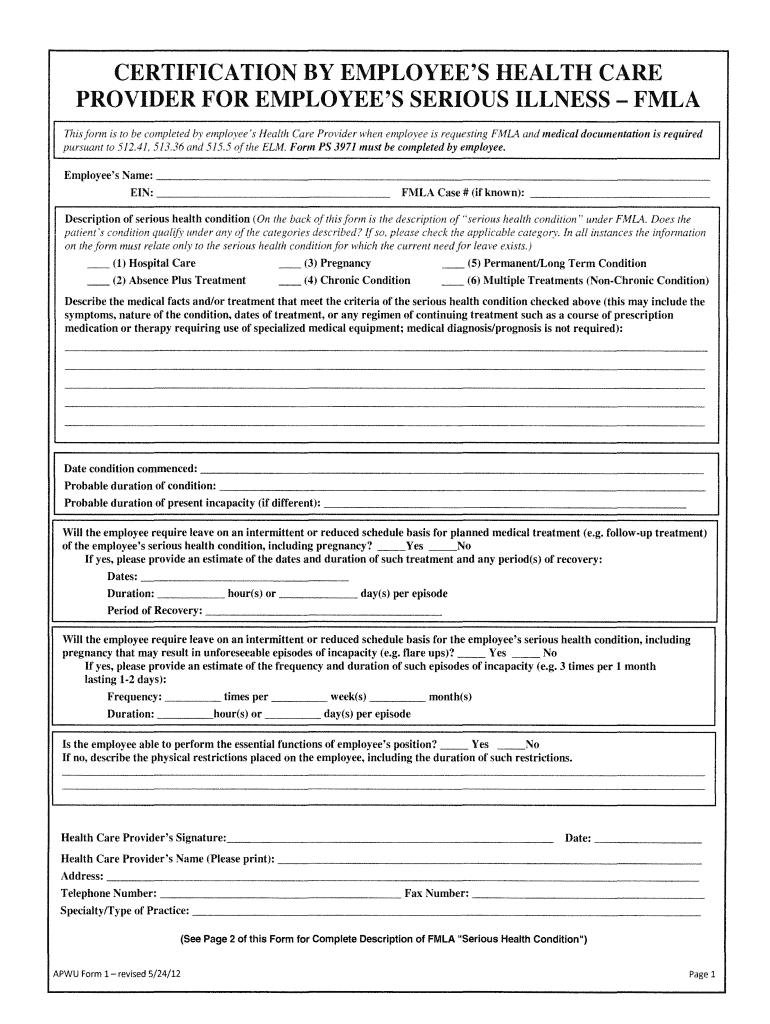FMLA Paperwork Explained: Your Essential Guide

Overview of the Family and Medical Leave Act (FMLA)

The Family and Medical Leave Act (FMLA) was enacted in 1993 to provide employees with a critical balance between work responsibilities and family or health issues. Under this act, eligible employees are granted up to 12 workweeks of unpaid, job-protected leave within any 12-month period. This leave is available for the following reasons:
- To care for the employee’s newborn child or a newly placed adopted or foster child.
- To care for a spouse, child, or parent with a serious health condition.
- When an employee is unable to work due to their own serious health condition.
- Or for any qualifying exigency arising out of the fact that the employee’s spouse, son, daughter, or parent is on covered active duty or call to covered active duty status.
In cases where a service member has a serious illness or injury, the leave duration can be extended to 26 workweeks within a single 12-month period.
Eligibility Criteria for FMLA

Not all employees are eligible for FMLA leave. Here’s what you need to know to determine if you qualify:
- You must work for a covered employer:
- Public agencies or state/local governments.
- Employers with 50 or more employees working within 75 miles of your worksite.
- You must have been employed for at least 12 months (which need not be consecutive).
- You must have worked at least 1,250 hours during the 12 months immediately preceding the leave.
Key Forms and Documentation

Navigating through FMLA paperwork involves dealing with several key documents, each critical in its own right:
- FMLA Notice (WH-381): This form informs employees of their rights and responsibilities under the FMLA.
- Certification of Health Care Provider (WH-380-E or WH-380-F): Employees must submit this form completed by a healthcare provider to verify the need for FMLA leave due to a serious health condition.
- Notice of Eligibility and Rights & Responsibilities (WH-382): Employers must provide this to the employee to outline their eligibility and what is required during their leave.
📝 Note: The employee has 15 calendar days from the date the form is received to provide the necessary certification unless extenuating circumstances exist.
Step-by-Step Guide to Applying for FMLA

Applying for FMLA leave requires careful attention to detail. Here’s a comprehensive guide:
- Notify Your Employer: Inform your employer about your intention to take FMLA leave as soon as possible. Depending on the circumstances, you might need to provide 30 days advance notice.
- Provide Certification: Depending on the reason for your leave, you’ll need to provide medical certification or proof of military duty.
- Receive FMLA Notice: Your employer will provide you with a written notice confirming if your leave request falls under FMLA, along with details on rights and responsibilities.
- Designate Leave: Your employer will designate your absence as FMLA leave once it’s confirmed that it meets the act’s criteria.
- Track and Document: Keep track of your leave usage. You may be required to update your employer on changes in your situation or provide periodic recertification if your leave extends beyond the initial period.
When applying for FMLA leave, here are some important points to keep in mind:
📌 Note: If you are absent due to a reason covered by FMLA but did not initially claim it, your employer can retroactively designate your absence as FMLA leave within two business days after your return.
Common Issues and Misconceptions

Understanding FMLA can be tricky due to common misconceptions. Let’s dispel some:
- Paid Leave: FMLA ensures job protection, not necessarily paid leave. Some employers might have policies allowing for paid leave during FMLA absence.
- Immediate Leave: While you might need to provide notice, FMLA leave isn’t always immediate. Emergency circumstances can be different.
- Intermittent Leave: FMLA allows for intermittent leave or reduced work schedules if medically necessary.
Employer Responsibilities

Employers have specific duties under FMLA to ensure compliance and protection for employees:
- Maintain the employee’s health benefits during leave.
- Restore the employee to their original or equivalent position with equivalent pay, benefits, and other terms of employment.
- Keep confidential the health information related to FMLA leave.
- Provide periodic updates to the employee regarding their leave status.
Recapping FMLA Application

Understanding the application process for FMLA leaves helps balance personal and professional life seamlessly. The key takeaways include:
- Eligibility criteria for employees and employers.
- The critical documents and the roles they play.
- Steps to apply for leave with timelines and proper notification.
- Dispel common myths and understand employer responsibilities.
This guide provides a foundation for navigating the FMLA, ensuring that both employees and employers are well-informed, enabling them to leverage this critical benefit effectively.
Can I Take FMLA Leave for Mental Health?

+
Yes, mental health conditions that meet the definition of a “serious health condition” under the FMLA can qualify for leave. This includes conditions that require continuing treatment or cause incapacity for more than three consecutive calendar days.
What happens if I can’t return to work after FMLA leave?

+
If you cannot return to work after your FMLA leave expires, your job protection ends, and you might need to resign or be subject to your employer’s termination policy. However, if you’re still covered under a health condition, alternative arrangements like short-term disability might apply.
Is my job guaranteed when I return from FMLA?

+
Yes, provided you return within the specified leave period, you are entitled to the same or an equivalent position with equivalent pay, benefits, and other employment terms. However, if the company undergoes restructuring or downsizing during your leave, you might not be protected if the position you held is no longer available.



